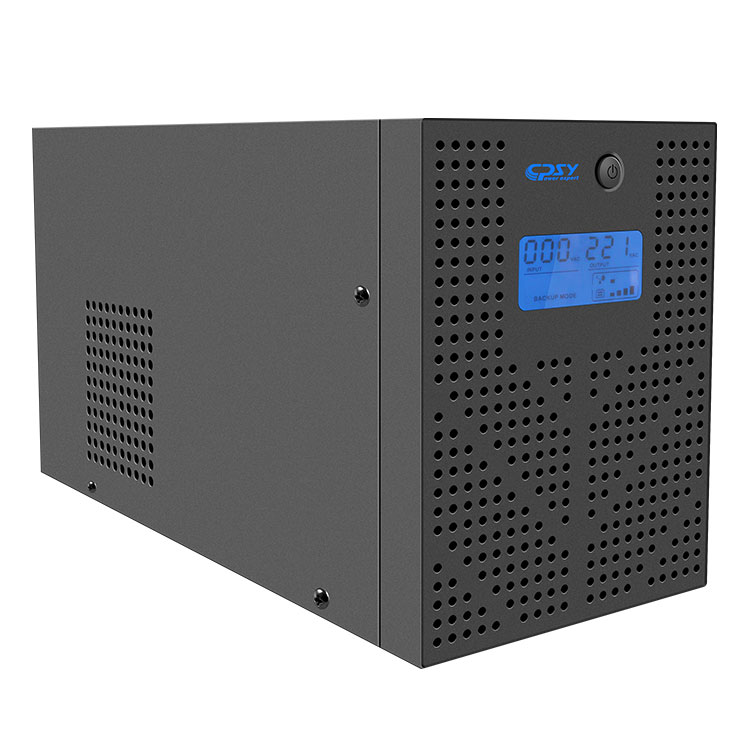Data Center Infrastructure: The Backbone of Modern Technology
2025-04-16
In the fast-paced, data-driven world of today, data centers play a crucial role in ensuring that businesses, governments, and organizations can deliver services, store data, and perform computations seamlessly. From cloud computing to e-commerce, everything relies on the powerful infrastructure of data centers. These facilities house the essential technology that powers the internet, supports various applications, and keeps data flowing securely and efficiently.
In this blog, we will explore the components that make up data center infrastructure, why they are essential, and how they contribute to the overall effectiveness and reliability of modern technology systems.
What is Data Center Infrastructure?
Data center infrastructure refers to the physical and virtual components that are used to operate a data center. These elements include everything from the building itself, the servers, storage devices, networking equipment, power systems, and cooling systems. All these components are designed to work together to ensure the uninterrupted operation of services that we rely on every day.
Key Components of Data Center Infrastructure
Data centers are complex facilities, and their infrastructure consists of several critical components:
1. Servers and Storage Systems
At the core of every data center are the servers and storage systems. These machines process and store the data that flows through the facility. Servers can be thought of as the "brains" of the data center, handling everything from web hosting to processing complex applications.
Storage systems are equally important. They are used to store the massive volumes of data generated by various systems. This can include anything from user files to large databases used by enterprises. The ability to store and quickly access this data is essential for maintaining smooth operations.
2. Networking Equipment
Networking equipment, including switches, routers, and firewalls, ensures that data can be efficiently transmitted across servers and external networks. It is crucial for maintaining high-speed data transfer and network security. A robust and reliable network infrastructure allows businesses to maintain connectivity, ensure low-latency communication, and secure sensitive information from external threats.
3. Power Supply and Backup Systems
A data center is essentially a 24/7 operation that cannot afford downtime. To ensure this, a constant and reliable power supply is necessary. This includes uninterruptible power supplies (UPS), which provide backup power during outages, and backup generators that ensure operations can continue if the main power supply fails.
These systems ensure that even in the event of an electrical failure, the data center can continue to function without service disruptions. A steady power supply is critical for data centers that handle time-sensitive or mission-critical data.
4. Cooling Systems
Data centers generate a significant amount of heat due to the high volume of servers and electronic equipment running simultaneously. To prevent overheating and maintain optimal operating conditions, data centers require highly efficient cooling systems. These systems typically include air conditioning units, liquid cooling, and advanced airflow management techniques.
Effective cooling not only ensures that equipment operates at an ideal temperature but also helps extend the life of servers and other components, reducing the risk of hardware failures.
5. Security Systems
Security is one of the most critical aspects of data center infrastructure. Since data centers often house sensitive information, including financial records, personal data, and intellectual property, they must be protected from both physical and cyber threats.
Physical security involves using surveillance cameras, biometric access controls, security guards, and alarm systems to protect the facility from unauthorized access. On the digital side, firewalls, encryption protocols, and intrusion detection systems help protect the data and network from cyberattacks.
6. Environmental Control Systems
In addition to cooling, other environmental controls are crucial to maintaining a healthy and efficient data center. This includes monitoring humidity levels, air quality, and temperature to ensure that the data center is operating within its optimal range. Environmental controls help prevent the growth of bacteria, dust, or mold, all of which can damage sensitive equipment over time.
Why is Data Center Infrastructure Important?
1. Business Continuity
The infrastructure of a data center is vital for ensuring the continuous operation of businesses and services. Whether for cloud computing, web hosting, or e-commerce, businesses rely on data centers to keep their operations running without interruptions. Downtime can result in financial losses, reputational damage, and a loss of customer trust.
2. Scalability
As businesses grow, their IT needs often increase. A well-designed data center infrastructure allows for the scalability needed to handle increased demand. For example, additional servers or storage can be added to accommodate more data or more users, ensuring that businesses can continue to expand without facing capacity limitations.
3. Data Security and Compliance
Data centers are critical for maintaining the security and privacy of the information stored within them. A secure infrastructure ensures that data is protected from unauthorized access, theft, or loss. Additionally, data centers often comply with industry regulations, such as GDPR, HIPAA, or PCI DSS, which require businesses to maintain secure handling of customer data.
4. Cost Efficiency
While setting up and maintaining a data center infrastructure can be costly, it offers long-term savings for businesses. By investing in robust infrastructure, companies can avoid service interruptions, reduce energy consumption, and ensure the efficient use of resources. Cloud service providers, for instance, rely on data center infrastructure to offer scalable services without the need for businesses to build their own data centers.
Trends in Data Center Infrastructure
As technology continues to evolve, so does data center infrastructure. Some of the emerging trends include:
- Edge Computing: The rise of edge computing, where data processing happens closer to the source of data generation, has led to smaller, decentralized data centers known as "edge data centers." These are designed to provide faster, localized data processing.
- Green Data Centers: With increasing awareness about climate change and energy consumption, many data centers are now focusing on becoming more energy-efficient and environmentally friendly. This includes using renewable energy sources, improving cooling efficiency, and adopting energy-saving technologies.
- Cloud Computing: The growing demand for cloud services has transformed the way data centers are structured. Cloud-based infrastructures often utilize large-scale data centers that provide services such as virtualized storage and computing power.
- Automation and AI: Automation tools and artificial intelligence are being used to optimize data center operations. This includes managing workloads, predicting maintenance needs, and improving energy efficiency through machine learning algorithms.
Conclusion
Data center infrastructure forms the foundation of modern digital services and is an integral part of the global economy. With the rapid growth of data consumption, cloud computing, and IoT devices, the importance of robust, reliable, and secure data center infrastructure has never been more evident.
From ensuring business continuity to securing sensitive data, investing in high-quality data center infrastructure is key to maintaining seamless operations. As technology continues to evolve, data centers will play an even more critical role in supporting the innovations of tomorrow, making them an essential part of our increasingly digital world.



